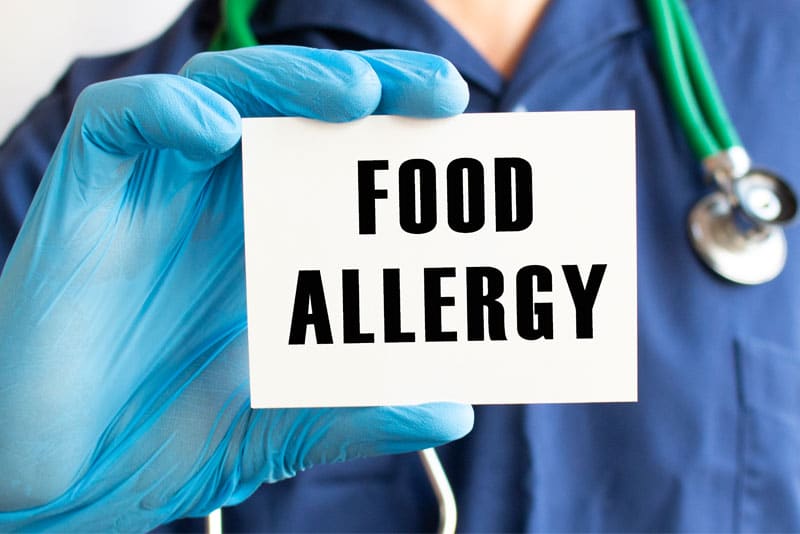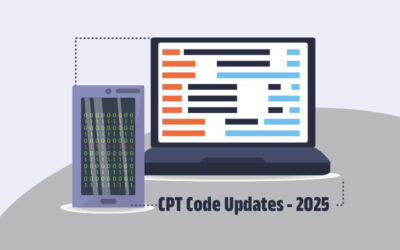With Christmas and New Year around the corner, December is a month of celebrations involving an overdose of fun and joy. The month not only provides a proper farewell to the current year but also an enthusiastic welcome to a brand new year. Special food items or dishes are a major part of celebrations, be it Christmas dinner or New Year eve. In fact, this is one of the primary reasons why food allergies become extremely common during celebrations. Regarded as a significant public health concern, food allergy affects both children and adults and may continue to increase in prevalence. According to the Asthma and Allergy Foundation of America (AAFA, 2020 statistics), each year, about 200,000 hospital visits occur due to food allergies in the United States. It is estimated that more than 50 million people in the U.S. have an allergic reaction each year and that allergies are the sixth leading cause of chronic illness in the country. In simple terms, an allergy occurs when your body’s natural defences overreact to exposure to a particular substance, treating it as an invader and sending out chemicals to defend against it. For people who have a food allergy, even exposure to very small amounts of the problem food can cause serious and life-threatening allergic reactions. There is no clear and specific treatment for food allergies as the disease can be effectively managed by allergen avoidance or treatment of symptoms. Billing and coding food allergies can be challenging as there are several food items that trigger allergic reactions. For correct clinical documentation of the allergic reactions or condition, physicians depend on established medical billing and coding companies.
Common Food Allergy Triggers
The most common foods that trigger these reactions include peanuts, wheat, soya and eggs. Different types of fish (like shelfish), peanuts and tree nuts can also cause allergic reaction. The most common allergenic foods, which account for about 90 percent of all food allergies, is commonly referred to as the “big eight”. These are-
- Milk (mostly in children)
- Eggs
- Peanuts
- Wheat
- Tree nuts, like walnuts, almonds, pine nuts, brazil nuts, and pecans
- Soy
- Shellfish (mostly in adults)
- Fish (mostly in adults)
Symptoms of Allergic Reactions
The signs and symptoms associated with allergies can range from mild to severe and affect people differently. For instance, a food that triggered only mild symptoms on one occasion may cause more severe symptoms at another time. An allergic reaction can happen within minutes of eating, or hours later. Mild symptoms can be hard to tie to specific foods. Common signs and symptoms include –
- Tingling in the mouth
- Skin rashes
- Skin becoming itchy and/or blotchy
- Runny or stuffy nose, sneezing, or a slight, dry cough
- Nausea and diarrhea
- Lips and face might swell
- Itchy, watery, red eyes
- Burning sensation in the lips and mouth
Diagnosing Food Allergies
Diagnosis may begin with a detailed physical examination. The allergy specialists will want to know about the specific allergies, including the symptoms, how long it takes for a reaction to occur, types of food items that caused it, whether the food is cooked or not, and where it was eaten. The physician will also ask about other existing allergies, such as hay fever or asthma. Patients also need to tell the physician about close relatives who may have allergies. Based on the specific diagnosis, physicians may recommend tests like – skin prick test, blood test and physician-supervised blinded oral food challenge. Physicians may also ask patients to maintain a food diary where they can write down everything they eat and describe symptoms (if they occur). Depending on their medical history and initial test results, patients may have to take more than one test before receiving their diagnosis.
Treatment for allergy reactions related to food may depend on the type of things that cause these allergies and the severity of symptoms. Treatment options include – Elimination diet. Patients need to see a dietitian after being diagnosed with a food allergy. The dietician will decide whether a specific type of food needs to be eliminated from the patient’s diet, which will be done in a way that does not undermine the individual’s health. For instance, if a person suffers an allergy just to peanuts, there will be no health consequences if the individual never eats peanuts again. However, an allergy to milk means finding other sources of calcium and protein. In short, elimination diet doesn’t mean not eating that particular food causing allergy; it may also include never inhaling it, touching it, or eating foods with traces of it inside. Medications like antihistamines in the form of gels, liquids, or tablets are usually effective for patients with mild or moderate allergies, and epinephrine (adrenaline) may be recommended for individuals who have food allergies that could result in anaphylaxis. It is important for patients to plan proper strategies to prevent the occurrence of allergic reactions in the long run.
Allergy specialists or other physicians treating patients suffering from food allergies need to correctly the document the causes, symptoms and treatment options. ICD-10 diagnosis codes for food allergy include –
- Z91.01 Food allergy status
- Z91.010 Allergy to peanuts
- Z91.011 Allergy to milk products
- Z91.012 Allergy to eggs
- Z91.013 Allergy to seafood
- Z91.018 Allergy to other foods
- Z91.02 Food additives allergy status
Anaphylaxis – A Potentially Life-threatening Allergic Reaction
Generally, in the case of people with severe allergies, exposure to their specific allergens can directly result in a life-threatening reaction called anaphylaxis. Most anaphylaxis cases are caused by eating foods that are known to cause allergies, such as peanuts or tree nuts. Anaphylaxis often begins within minutes after a person eats a problem food. The condition causes the immune system to release a flood of chemicals that can cause the patient to go into shock – the patient’s blood pressure drops suddenly and the airways narrow, blocking breathing.
Following are the relevant ICD-10 codes to document such anaphylactic reactions related to food–
- T78 Adverse effects, not elsewhere classified
- T78.0 Anaphylactic reaction due to food
- T78.00 Anaphylactic reaction due to unspecified food
- T78.00XA …… initial encounter
- T78.00XD …… subsequent encounter
- T78.00XS …… sequela
- T78.01 Anaphylactic reaction due to peanuts
- T78.01XA …… initial encounter
- T78.01XD …… subsequent encounter
- T78.01XS …… sequela
- T78.02 Anaphylactic reaction due to shellfish (crustaceans)
- T78.02XA …… initial encounter
- T78.02XD …… subsequent encounter
- T78.02XS …… sequela
- T78.03 Anaphylactic reaction due to other fish
- T78.03XA …… initial encounter
- T78.03XD …… subsequent encounter
- T78.03XS …… sequela
- T78.04 Anaphylactic reaction due to fruits and vegetables
- T78.04XA …… initial encounter
- T78.04XD …… subsequent encounter
- T78.04XS …… sequela
- T78.05 Anaphylactic reaction due to tree nuts and seeds
- T78.05XA …… initial encounter
- T78.05XD …… subsequent encounter
- T78.05XS …… sequela
- T78.06 Anaphylactic reaction due to food additives
- T78.06XA …… initial encounter
- T78.06XD …… subsequent encounter
- T78.06XS …… sequela
- T78.07 Anaphylactic reaction due to milk and dairy products
- T78.07XA …… initial encounterr
- T78.07XD …… subsequent encounterr
- T78.07XS …… sequela
- T78.08 Anaphylactic reaction due to eggs
- T78.08XA …… initial encounter
- T78.08XD …… subsequent encounter
- T78.08XS …… sequela
- T78.09 Anaphylactic reaction due to other food products
- T78.09XA …… initial encounter
- T78.09XD …… subsequent encounter
- T78.09XS …… sequela
- T78.00 Anaphylactic reaction due to unspecified food
- T78.1 Other adverse food reactions, not elsewhere classified
- T78.1XXA …… initial encounter
- T78.1XXD …… subsequent encounter
- T78.1XXS …… sequela
- T78.2 Anaphylactic shock, unspecified
- T78.2XXA …… initial encounter
- T78.2XXD …… subsequent encounter
- T78.2XXS …… sequela
Allergic reactions related to food items are unpredictable. Avoiding the allergen that could trigger a reaction can help prevent the condition in the long run. However, it is crucial to have a proper understanding about the specific allergens (even if they have never caused severe reactions) and get always prepared to face an emergency situation.
Allergy and sleep medicine medical billing and coding can be challenging. With all the complexities involved, the support of a reliable and experienced medical coding service could prove immensely useful for physicians.




